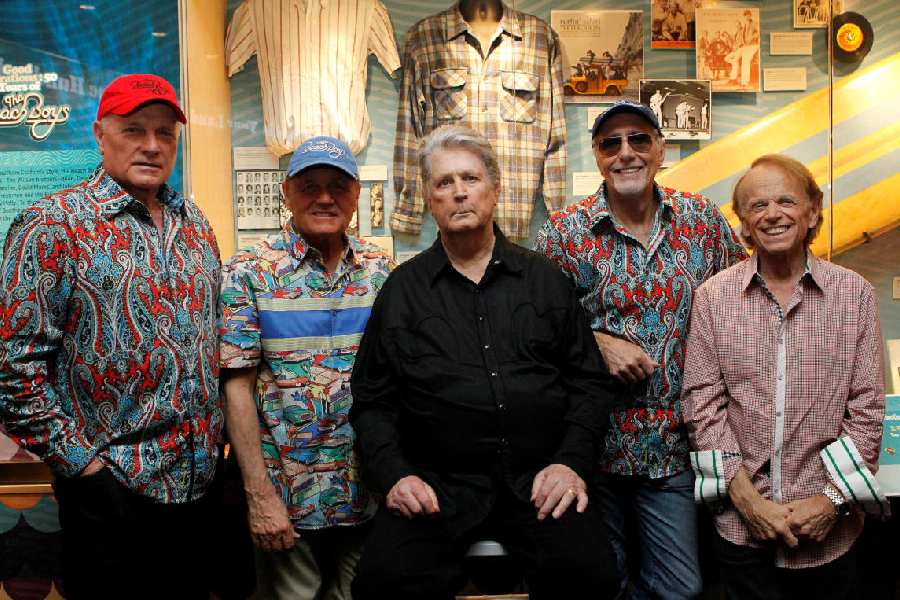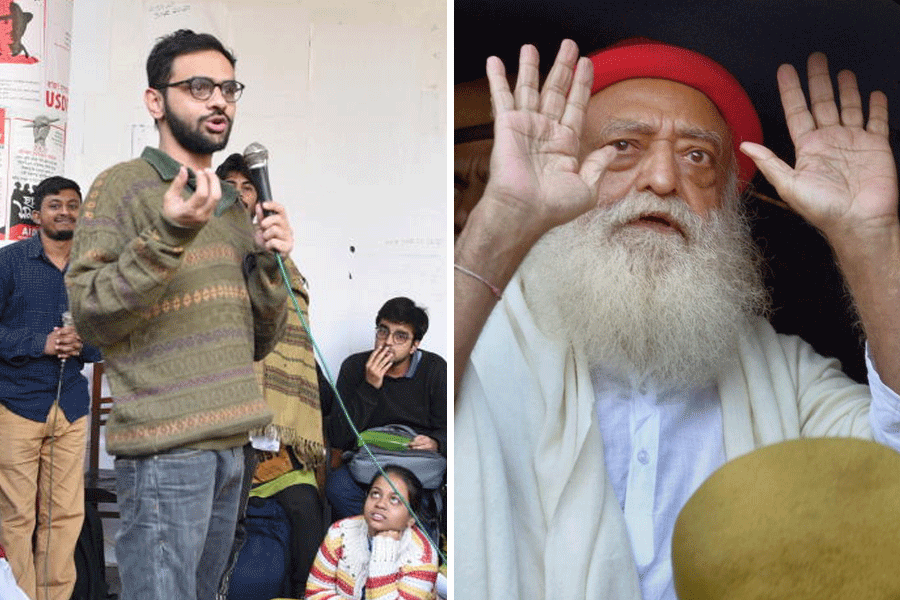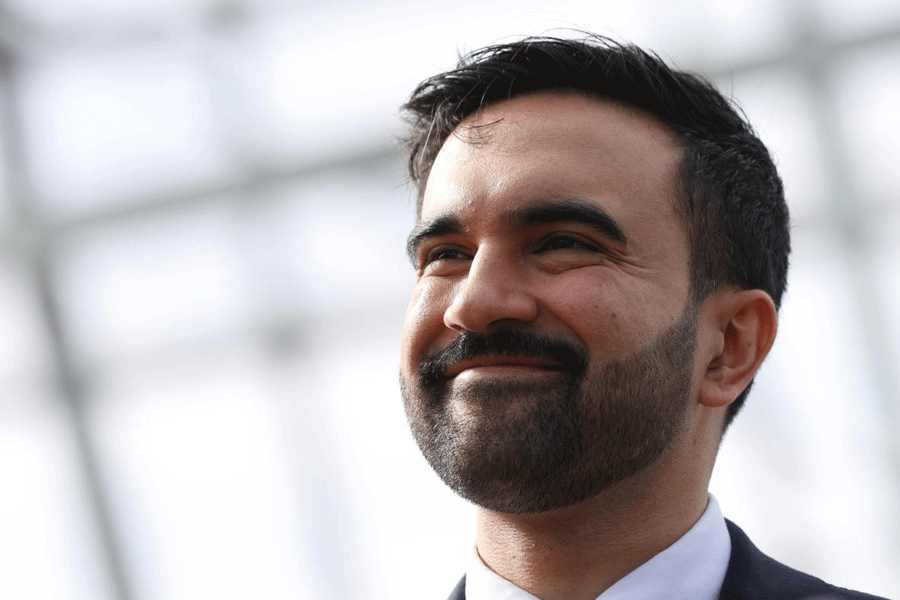Of all the white American groups that made it to the charts before the Beatles, the Beach Boys successfully fought the “British Invasion” — with their surf-and-summer pop — and then survived into the ’70s. At the heart of the group was the genius of Brian Wilson, who died on Wednesday, after a struggle with mental illness and drugs. He was 82.
When the Beatles and Rolling Stones arrived to make guitar-band rock popular, they settled on an origin story about the merging of blues and country music, about being inspired by the story of Muddy Waters and Elvis Presley.
The tale downplayed the music and vocal contributions of groups like the Soul Stirrers, Four Freshmen and the Kingston Trio. The Beach Boys soaked up many of the ideas about vocals. Their debut single Surfin’, originally released on the local Candix label, found a goldmine: It fused surfing and harmonies, teenage love and heartbreaks. They created songs that celebrated summer and innocence.
The song was a hit big enough to land them a recording contract with Capitol, a photo shoot at Paradise Cove, and their first LP, Surfin’ Safari, released in the fall of 1962.
Sons of California’s 1960s surfing boom, the Beach Boys were based around the Wilson brothers. Songwriting genius Brian Wilson, Dennis Wilson, Carl Wilson, cousin Mike Love and friend Al Jardine grew up in the middle-class Los Angeles district of Hawthorne.
The boys started out singing barbershop-style harmonies at the homes of friends and relatives. They performed under several names — like The Pendletones (a name taken from a make of heavy plaid shirts that was standard surfer wear) and Kenny and the Cadets (Brian being Kenny) — before landing upon their popular name. Brian can finally be with his brothers — Dennis died in 1983 and Carl in 1998.
Magical, mystical California
Brian Wilson and his brothers were raised in a musical family. He developed a tenor voice through singing at home with his parents, Murry and Audree. For most, Brian will always be the heart of the band. His brother Dennis, speaking about Brian in 1976, said: “He is the most vulnerable human being I know…. I am dumbfounded… in awe of him.” What made Brian popular was his understanding of the ethos of California experiences in ways few artistes have.
The music Brian made with the group made the world hang on to a belief in the perpetual existence of a magical Southern California, of the beach and “bodies in the sand”, as the lyrics of Kokomo go. Each time we hear songs like Fun, Fun, Fun, I Get Around, Little Deuce Coupe, Good Vibrations, California Girls and Barbara Ann, we are reminded of the world Brian created, first in his mind and then in the studio.
Without Brian, California would still have lured millions of people, but it wouldn’t have been a mystical, magical place.
Inside his vocal mix of rock and doo-wop, Brian celebrated the achievements of an older generation — harmonies. The Four Freshmen from Columbus, Indiana, with hits like It’s a Blue World and Graduation Day, gave Brian a template that relied on inventive chord and key changes. The complexity he added was musical, more than lyrical.

The Beach Boys (Mike Love, Bruce Johnston, Brian Wilson, David Marks and Al Jardine) pose during the opening night of their special exhibit at the Grammy Museum in Los Angeles in 2012
Speedster music
Born on June 20, 1942, Wilson grew up listening to Chuck Berry. His mother, Audree, loved to play the boogie-woogie piano while his father, Murray, was an aspiring songwriter.
Most stories about Brian focus on the magical vocal blend created by the three Wilson brothers, but his voice is as inseparably linked to his cousin Mike as it was to Dennis and Carl, because Mike’s baritone was the foundation in so many of Brian’s arrangements. Mike was there in 1961 to encourage Brian to do something with music, as he needed an escape from his hastily settled life as a working family man. Mike and Brian ended up writing Surfin’.
Brian was not just a great lyricist; he was one of the best people to have in the studio. He was always in control.
Working on Surfin’ USA in January, 1963, he figured out that double-tracking the vocals— recording them twice —would give the harmonies a brightness. He did the same with the single’s B-side, Shut Down. The trick became a Beach Boys trademark.
He became a hitmaker big enough to rent office space at Sunset-Vine Tower in Hollywood. The group’s manager Fred Vail said “it was just a getaway for Brian”.
Brian was in charge of production duties for the group’s third album, Surfer Girl (released in September 1963). It sounded as if the summer sun was beating down on music systems. A song like Little Deuce Coupe sounded like a speedster.
At the same time, he was mesmerised by the songs Phil Spector was making. He first noticed the young songwriter-producer when he hit the top of the Billboard charts with To Know Him Is to Love Him as part of the Teddy Bears in 1958-59.
By the time The Ronettes’ Be My Baby was released, he thought the sound so much more than what critics were calling it — Spector’s Wall of Sound.
It was also the time when Brian began using cannabis and LSD. It is said that he wrote the signature Beach Boys song, California Girls, while on his first trip. Soon after, he had to spend time in psychiatric hospitals. He would eventually be diagnosed with schizoaffective disorder and mild manic depression.
Despite all the difficulties, he wrote the masterpiece Pet Sounds in 1966. It contained masterpieces like God Only Knows, Would’t It Be Nice and I Just Wasn’t Made for These Times.
Paul McCartney has stated Pet Sounds was integral to the creation of what many consider to be the greatest album by the Beatles, Sgt. Pepper’s Lonely Hearts Club Band in a 1997 interview.
Even Bob Dylan was mesmerised by what Brian Wilson and his group had been doing. “That ear,” Dylan once said. “I mean, Jesus, he’s got to will that to the Smithsonian.”
The follow-up Smile was never completed, but it was later adapted into a 2004 solo album, and the original recordings were eventually released as The Smile Sessions in 2011.
After Good Vibrations in 1966, the band did not have another number-one single until Kokomo in 1988, which was made without Brian’s involvement.
Among the most underrated but important albums in Brian’s career was Sunflower (1970), because it turned out to be a turning point.
“Photographs can be misleading, and the cover photo of Sunflower sure is. I was at the centre of the band in the photo, but by the time the record came out, I wasn’t at the centre of the band anymore. Some people will say that I pulled away from the centre. Some people will say that I was pushed away. Maybe it was a little bit of both,” Brian wrote in his autobiography.
He wrote about the problems he faced. “How do you know when a problem starts? Did it start in 1964 on an airplane to Houston, when I freaked out and decided that I couldn’t tour with the band anymore? Did it start in the ’40s when my father whacked me because he didn’t like how I was acting? Did it start in the ’70s with drugs or long before that with the beginnings of mental illness that no one knew how to handle?”
Later years
He returned to the Beach Boys fold for the 1976 album 15 Big Ones, but then again, it turned out to be an era of alcoholism and drug abuse. Closely controlled by the controversial psychologist Eugene Landy, his equilibrium improved in the 1980s. He released his self-titled debut solo album in 1988.
Brian continued to tour and release occasional solo albums, and reunited with the Beach Boys in 2011 for a tour and the album That’s Why God Made the Radio.
Wilson was married twice, first to Marilyn Rovell in 1964, with whom he had two daughters, Carnie and Wendy (who formed a vocal group of their own with Chynna Phillips; it was called Wilson Phillips). In 1995, he married Melinda Kae Ledbetter and they adopted five children together. Melinda died in January 2024.
5 essential Brian Wilson songs
Surfin’ USA: Wilson rewrote Chuck Berry’s Sweet Little Sixteen, keeping in mind the places one could surf in California.
Don’t Worry Baby: Brian had the Ronettes’ Be My Baby on his mind. The song has been used in several films, like Déjà Vu in 2006.
I Get Around: “Some people were saying we were even better (than British Invasion bands), that our songs were more interesting or sophisticated or created more positive energy,” Wilson wrote about the song in I Am Brian Wilson.
Wouldn’t It Be Nice: A happy song that experimented with new sounds and techniques, like the use of two accordions.
Good Vibrations: It was recorded in 17 sessions in four studios across six months.










